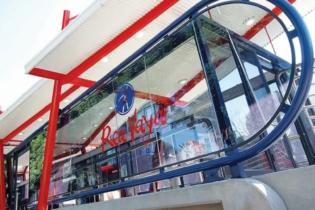Oversupply of seats spells financial trouble. Rocked by high fuel prices, executive shuffles, cancelled flights, financial losses and layoffs, South Africa’s airline industry is taking strain.
Apart from financial challenges, listed airline companies Comair and 1time Airline lost top executives, newcomer Velvet Sky was grounded less than a year after its first flight and the ambitious SA National Taxi Council (Santaco) airline has yet to take off. Plane Talking founder and aviation expert Linden Birns said that two big international aviation challenges are also affecting the domestic airline industry: global economic slowdown, resulting in people travelling less, and higher fuel prices squeezing margins. Jet fuel is usually about $20 more expensive than Brent crude oil, which traded at $123/barrel on Friday. “Fuel is the largest single operational cost line item for any airline and the rising costs affect each airline similarly,” said Nico Bezuidenhout, CEO of state-owned SAA’s low-cost carrier Mango. About 35% of Mango’s operating spending is on fuel. Birns said South African airline margins are under greater pressure from higher user charges, such as for air traffic management, weather forecasts, the fuel pipeline from KwaZulu-Natal to Gauteng (another tariff rise was approved this week) and the Airport Companies of SA (Acsa). Acsa’s passenger service, landing and aircraft parking charges rose almost 70% last October. The committee that oversees economic regulation of Acsa approved a tariff rise of 30.6% for 2012-13. The rise was due on April 1, but Solomon Makgale, Acsa group communications manager, said Acsa had decided to engage further with airlines to establish an appropriate time. The “effective increase” for 2012-13 would be significantly lower than 30.6%, he said. Birns said local airlines are realising the only way to cut costs is to be more efficient. Bezuidenhout said fuel burn could be up to 25% higher in aircraft in service for more than 30 years. Mango’s new-generation Boeing 737-800s are more fuel efficient. Comair, with its low-cost kulula.com, started to replace its fleet with Boeing 737-800s in 2010. The group reported a loss of 4.9c a share for the six months to December. 1time Airline warned in Dec-ember its earnings a share for the year to December were expected to be more than 20% down on the previous year. SAA asked the government last month for R4-billion to R6-billion for “recapitalisation”. Guy Leitch, editor of SA Flyer Magazine, said South Africa is not suitable for low-cost carriers. “The model of low-cost carriers around the world is most often based on using secondary [and cheaper] airports,” he said. “South Africa does not have any alternatives, other than Lanseria International Airport, to the Acsa airports.”kulula.com was the first domestic airline to successfully operate from Lanseria and was joined by Mango last June and 1time two weeks ago.
Lanseria has grown beyond recognition in a decade and in September expanded from two to five boarding gates. Johan Opperman, Lanseria’s marketing and PR manager, said the airport handled about 1.2million passengers on scheduled flights last year and numbers are rising. Acsa said its nine airports handled 29.9million passengers from last April to this January, 2.6% up on the previous corresponding period. One reason given for the rise in passenger numbers was the introduction of Velvet Sky flights last March, but that airline hit trouble last month and cancelled all flights after suppliers refused to sell it fuel due to unpaid bills. BP applied for Velvet’s liquidation, but another creditor launched an application to compile a rescue plan, so the liquidation move was postponed indefinitely. While Velvet’s website said on Friday it would “announce its plans to resume flights as soon as possible”, no bookings could be made and the call centre could not say when bookings would be resumed. It emerged on Friday that Velvet started to lay off staff this week. If Velvet starts operating again it will not find it easy. Its biggest challenge will be restoring trust with passengers, suppliers and the market, said Birns. “But they will have to pull an impressive rabbit out of the hat. “The market is certainly big enough, there is no reason why we should not have other airlines in the market.” But some airline executives differ. “At this point there is too much capacity in the domestic market – expansion would have to be directed regionally,” said Bezuidenhout. Axel Simon, director Southern Africa for Lufthansa German Airlines and Swiss International Airlines, said supply of seats in South Africa exceeds demand. Makgale said rising capacity outpacing demand contributed to financial troubles. But, even in this tough environment, Santaco still plans to take off, despite two postponements. Birns said Velvet’s troubles contributed to Santaco’s caution, but there is space for such an airline locally. “They are talking about a particular market segment which has been the holy grail for the airline industry in this country and no one has been able to find the right way to do it,” he said. Source: www.businesslive.co.za







